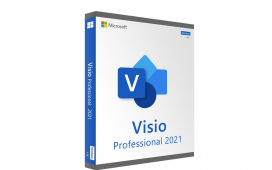
Virtual meetings aren’t easy. Even the leaders of the big nations couldn’t get it to work perfectly
Alexei Druzhinin/TASS
We’ve had over a year of replacing conferences where you travel with virtual conferences. Everybody’s eager to meet in person once the pandemic fades, and the fall calendar is already swarming with bookings from the conferences that had to cancel during the lockdowns. In a year the world has learned a lot about what works and doesn’t in virtual conferences, and they will continue in some form even after the pandemic ends due to some advantages they have.
Conferences are about the attendees
Many virtual events have forgotten that people did not travel to watch industry talks and panels. They did it to do it with other people, to meet them and to network. Yet in the virtual world, too many events have been all about the video presentation and not about the audience.
No Webinars
Organizers should avoid anything that is or acts like a “webinar” where the audience are invisible and isolated from the speakers and one another. You might as well be watching a TV show — even Youtube videos can have live chat. Choose meeting tools which engage the audience, and which let the speakers and audience members see that audience. Let people feel they are part of a crowd, even if all they can do is text chat. For speakers, seeing at least some of the audience is crucial to see if they are engaged, laughing or bored. It’s the only way to connect with them.
Look for tools that make it easy to bring in audience members to interact with those on “stage.” Time how long it takes from somebody putting up their hand to them speaking with video before the group. Avoid tools where this is hard to do and audience members have to figure out how to turn on their cameras or unmute — they won’t figure it out on their own.
Encourage reaction, and look for tools that let people react. The best way to allow that is to encourage headset-wearing audience members to stay unmuted, so they can laugh and cheer. Or have them keep video on to laugh, smile and applaud. Some tools such as the premium version of Google Meet now feature AI based background noise removal which makes this even better, since even loud background noises don’t impinge.
Lots of networking
The best part of any conference is the hallways and you should allocate lots of time for networking. And beware the trap of treating the networking time as a buffer that lets talks run long. End the talks on time — the networking is why people are here. Do it any way you can — Multiple “Zoom” style rooms, random networking or “proximity chat” tools that let people wander around a hall and chat when they get close to one another. There are dozens of those tools out there today. If you use Zoom, you can now create “breakout” rooms and allow attendees to move themselves among the rooms to network.
Ideally, let people create their own breakout rooms during networking, to add to those created by organizers. This can happen in Discord, Hopin and all the proximity chat tools, among others.
Many networking tools are working at “matchmaking” to try to get people together. So far, nobody has done anything impressive, but eventually somebody will.
Headsets, headsets, headsets
For panelists, and even for audience members who will interact, insist they wear a headset. (Wired or the Airpod Pro.) Headsets don’t just provide better audio with less tinny echo. They also reduce background noise so people don’t have to mute. They do audio in both directions, so people can converse naturally. On speakerphone, the system has to mute one direction, causing people to step over each other and not realize it — it’s dreadful. It’s ten times better with a headset.
If your event will feature group attendee video chat sessions — and it most definitely should feature those extensively — require a headset. To hammer this home, charge $40 if they want to attend on speakerphone, and also make them mute while not talking. The real purpose of the charge is to show you mean it. If you see somebody using speakerphone who did’t pay for it, kick them out of the conference for some time period, mostly to make everybody else scramble to find their headset.
Video on
A lot of people like to attend sessions and meetings with video off, invisible. If you’re trying to make a conversation that’s no good. Consider also charging another $40 if they want to participate with video off, though let them avoid the fee by using an excuse. It’s mostly a reminder that video is expected, though don’t enforce it as strongly as the headset rule.
Pay your speakers
Virtual events have been using almost entirely unpaid speakers. It’s naturally very tempting, and it’s easy to recruit speakers when they don’t have to travel and you even let them prerecord at a time of their own choice. You can even get CEOs of important companies to speak this way.
But don’t forget, your conference is about the audience. Unpaid speakers are there only because they are getting something out of it for themselves. They are not there to serve the audience, they are doing it for their own reasons. Paid speakers are there to serve the audience. A successful paid speaker is good at engaging and holding the audience and making them learn something, they have to be or they won’t last as a paid speaker. In physical conferences, having paid speakers with their fees, airfares and hotel was expensive, but a small fraction of the event budget. With no travel expenses and time they will cost a fair bit less, but be a much larger part of the event budget. You have to decide whether you are there to serve the attendees or something else.
If you’re paying staff to manage the event (as you should) the speakers who provide the actual content to get everybody inspired and motivated with topics when they network should get paid too, with the possible exception of CEO interviews. (CEO talks just spout corporate lines, but interviews can exploit the right of the CEO to decide on the fly what’s confidential and what isn’t any more.)
(Disclosure: I have worked as a paid speaker so I have an interest in this!)
Choose your timezone and don’t run all day
Used to be you would fly over the ocean to a conference, and change your time zone by 9 hours and suffer the jetlag. You did it for the networking. With virtual events, you can do 3 events on 3 continents in one day — one of the attractions — but people are less willing to change their timezone. A common approach has been to schedule the California early morning, allowing Europeans to come late afternoon and Asians to stay up late and catch the start. If you’re not trying to welcome people in other zones, stick to your zone.
While you might have a typical conference run from 8am to 10pm with various events, people can’t handle that in virtual conferences. They need nice breaks away from the conference to do household and personal things, and they need lots of networking breaks.
To be practical, even all day 9-5 is too much for a virtual event. Many events have chosen to, instead of being one day, be two mornings or two afternoons. When people travel, you can’t do that, but it works better in the virtual world. You can also have open-ended networking after the programmed morning, for those who are able to stick around — but again, people can’t sit at a desk for 5 hours.
Be live
There’s a huge temptation to use pre-recorded talks. They offer huge technological advantages but suck the life out of an event. Here’s an earlier article on the virtues of live presentations, with all their technical flaws (which get easily forgiven when live) compared to pre-recorded. Live makes people feel they were part of something, not just watching a bad documentary. It’s pretty important for interactive feedback.
But if you must use pre-recorded…
Don’t. But if you do, limit it to only great speakers who can’t do it any other way. (Paid speakers of course will make the effort to do it live.) And if so, insist hard on exploiting the positive things pre-recorded does have to offer:
- Use a playback medium which supports speeding up the video while keeping the audio pitch normal. YouTube does this. Most people can easily watch typical talks at 1.5x, and many can go up to 2x depending on the speaker. This is easier if the audio is good quality and the speaker does not have a strong accent different from the listener.
- To a lesser extent, you can speed-up videos in advance by a smaller margin (up to 1.33) in order to make them fit for time if the speaker didn’t stay within time constraints.
- The player should let people set the size of the window to match their screen. Many players support only a small window or full screen, neither of which are good on large desktop displays.
- If the pre-recorded video is played on a schedule, let people start late — and use speed-up to catch up to real-time. That’s useful even in live talks.
- Pre-recorded video can of course be edited in a non-linear video editor, allowing both the presenter and event staff to fix problems, or do things like combine video of the speaker (with greenscreen or not) and the slides. Greenscreens can be had for under $40, but even without the speaker’s head can be inserted in an oval in most slide decks with minimal work.
- Try to have speakers present for a live Q&A session after people have watched their pre-recorded talk. Ideally they will have watched the talk not long before, to keep it fresh in their minds.

Greenscreens are not expensive and let you embed a speaker right into the slides in a way that’s … [+]
Brad Templeton
Make the talk focus on the speaker, not on the slides

A simple way to merge a portrait video of a speaker with slides, making the speaker very present and … [+]
Brad Templeton
Insist on quality video production for both live and pre-recorded, but especially for pre-recorded.
- Demand the pre-recording speakers use a tool that inserts them into their slides, like they are standing in front of them. Zoom has this built in for basic Powerpoint/Keynote, and anybody can do it with a greenscreen, or even without one, using free video tools like OBS. Prezi supports putting the slides into your video out of the box for both live and pre-recorded videos. Presentations with the speaker embedded in slides are many times more engaging and memorable than ones where you just see slides, or see slides and a small box to the side with speaker video.
- If you can’t do the above, look for presentation tools that display two videos — one of the speaker, and one of the slides, and let the speaker video be large. Make speakers be aware their slides will be smaller so they avoid putting tiny text on them — always the right advice. Zoom in “side by side” mode lets viewers move a slider to shrink the slides and expand the presenter, though not all know how to use it. An ideal tool would show the presenter large, the audience small and merged together, and the slides as big as needed, but no larger, but as yet no tool does this.
What about when we go hybrid?

Remember when we used to go to conferences and listen to fancy presentations?
Brad Templeton
The advantages of virtual events have many thinking that after we get back to physical ones, we’ll have hybrid events with both virtual and physical attendees. Experiments with this show the in-person folks have little interest in talking to the virtual attendees, so you will really have two events sharing the live program elements. In-person events will not tolerate pre-recorded talks, though they might tolerate the odd virtual speaker presenting live.
Because physical events tend to go non-stop and virtual events need long breaks, it will be a challenge. Few will stomach a 3-day non-stop conference. You can certainly let people watch live talks over video, and even present questions remotely. (Ideally they can even provide video of their question so everybody can see them, including the in-person audience.) Then the virtual group can have networking and the physical folks will do it in meatspace.
Virtual attendees, particularly those in other timezones, will probably want to watch some of the talks recorded. That means making the effort to produce better recordings, either with two videos (one of speaker and one of slides) or an automatic merging of the two. Again, they’ll want all the useful tools you can have with pre-recorded such as playback speedup.
Perhaps some day an event will put on such a great virtual experience that the audience is large, and the physical attendees are motivated to stop at virtual networking stations. Perhaps they would like a way to find somebody who asked an interesting question. Trade show booth staff (shows will be back) may find it useful if they can use the downtime that sometimes happens when everybody is at talks to talk to virtual visitors. (This normally happens only a small program-oriented events.)
A lot of work has to be done to make a hybrid conference truly worthwhile. Indeed, a lot still needs to be done to make networking work well at all-virtual events. There has been a glut of virtual events during Covid-19 and fatigue has set in.








